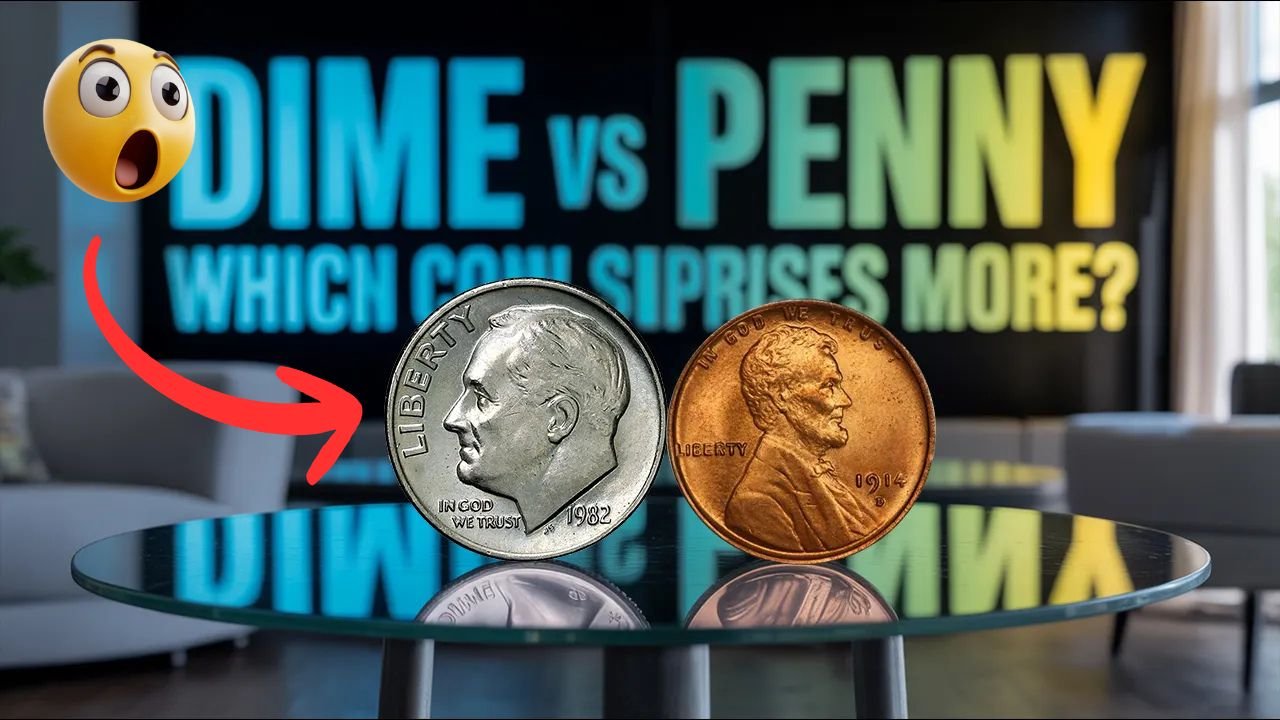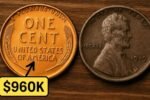Silver Roosevelt Dime vs. Lincoln Wheat Penny: When it comes to old American coins, two of the most talked-about pieces among collectors are the Silver Roosevelt Dime and the Lincoln Wheat Penny. Both coins may look simple, but each carries its own story, history, and hidden value. While one was made of real silver, the other represents a piece of early American history. So, which one truly holds more surprise? Let’s take a closer look.
The Birth of the Silver Roosevelt Dime
The Silver Roosevelt Dime was first introduced in 1946, right after the death of President Franklin D. Roosevelt. He was one of the most beloved leaders of his time, and the U.S. Mint decided to honor him by placing his face on the dime. What made the early Roosevelt Dimes special was their composition — they were made of 90% silver and 10% copper.
These silver dimes were produced until 1964, and after that, the Mint switched to a copper-nickel blend due to the rising cost of silver. That means if you find a Roosevelt Dime dated before 1965, it’s a real silver coin. This instantly makes it more valuable than its face value of just ten cents. Depending on silver prices and condition, a single silver dime can be worth a few dollars — and in rare cases, even more.
The Story Behind the Lincoln Wheat Penny
The Lincoln Wheat Penny, on the other hand, has a much older history. It was first released in 1909 to celebrate the 100th birthday of President Abraham Lincoln. It was also the first U.S. coin to feature a real person’s portrait. The reverse side of the coin showed two wheat ears, giving it the nickname “Wheat Penny.”
These pennies were minted from 1909 to 1958, and during that time, millions were made. However, not all Wheat Pennies are created equal. Some have errors, low mintages, or unique markings that make them incredibly valuable. For instance, the 1909-S VDB and the 1943 copper Wheat Penny are among the rarest and most valuable U.S. coins ever made. A few of them have sold for thousands — and even hundreds of thousands — of dollars.
Silver vs. Copper — What Makes Them Different?
The biggest difference between the two coins lies in their metal content. The Silver Roosevelt Dime contains real silver, a precious metal with lasting value. This means even if it’s worn out or damaged, it will still hold its “melt value” — the price of the silver inside. Collectors love these dimes because they combine historical importance with real material worth.
On the other hand, the Lincoln Wheat Penny is made of copper, which is not nearly as valuable as silver. However, its charm comes from rarity and historical interest. Certain dates and mint marks make specific Wheat Pennies incredibly hard to find, which drives their price up. So, while the Roosevelt Dime’s worth comes from its metal, the Wheat Penny’s value comes from its story.
Hidden Treasures in Everyday Change
What makes both of these coins so fascinating is that they can still appear in everyday circulation. Imagine finding a silver dime from 1964 or earlier in your pocket change — that’s like discovering a small piece of history that’s actually worth more than it seems. The same goes for Wheat Pennies. Though rare, people sometimes find them mixed in with modern pennies. Each discovery gives coin collectors a sense of excitement and wonder.
These coins remind us that sometimes, real treasure can appear in the most ordinary places. Many coin collectors started their hobby by spotting a strange-looking penny or an old silver dime in their change.
Which Coin Is More Surprising?
If we talk about pure metal value, the Silver Roosevelt Dime wins hands down. Silver always has a market value, and these dimes are sought after for their silver content alone. But when it comes to unexpected discoveries and potential for rare finds, the Lincoln Wheat Penny might hold the edge.
A common silver dime might fetch only a few dollars, while a rare Wheat Penny can be worth thousands if you’re lucky enough to find one. That unpredictability — the chance that an ordinary-looking penny could be a hidden gem — makes the Wheat Penny one of the most surprising coins in U.S. history.
The Collector’s Perspective
For collectors, both coins hold a special place. The Roosevelt Dime appeals to those who appreciate silver and clean design, while the Wheat Penny attracts collectors who enjoy searching for unique variations and rare dates. Many coin enthusiasts collect both, as they represent different eras of American history — one honoring Roosevelt’s leadership and the other celebrating Lincoln’s legacy.
Both coins teach us something about the past: how America changed over time, what materials were used, and how even the smallest pieces of metal can carry deep meaning.
Final Thoughts
In the end, the debate between the Silver Roosevelt Dime and the Lincoln Wheat Penny is less about which one is better, and more about what kind of “surprise” you value most. The dime’s surprise lies in its silver content — real and lasting. The penny’s surprise lies in its rarity — unpredictable and thrilling.
Either way, both coins prove that even small change can hold big stories. Whether you collect coins or just like to look closely at what’s in your wallet, these two classics remind us that history can hide in plain sight.
FAQs
Q: Are all Roosevelt Dimes made of silver?
No, only dimes made before 1965 are silver. After that, they were made of copper and nickel.
Q: What makes a Wheat Penny valuable?
Wheat Pennies are valuable if they have rare dates, mint errors, or were made in limited numbers.
Q: Can I still find these coins in circulation today?
Yes, but it’s rare. Some collectors still find them in rolls of change or old coin jars.
Q: Which coin should beginners start collecting?
The Wheat Penny is a great starting point for beginners because it’s easy to find and full of history.




